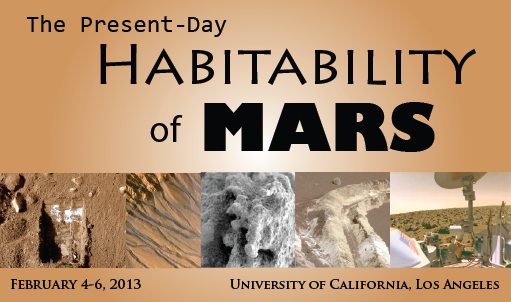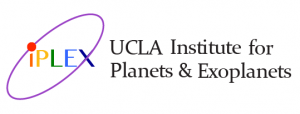SPEAKER:
Anders Carlson (University of Washington/Oregon State University)
Co-sponsored by the Institute for Environment and Sustainability
October 11, 2012: Evolution of glacial meltwater drainage systems revealed by heavy isotopes
Speaker
Sarah Aciego
University of Michigan
Co-sponsored by the Institute of Environment and Sustainability
October 4, 2012: Time Scales of Carbonate Mineral Sequestration of CO2 in the Subsurface
Speaker
Carl Steefel
Lawrence Berkeley Laboratory
Abstract
Mineral trapping of CO2 in the subsurface is acknowledged to be the most secure form of sequestration, but some studies have suggested that the process is extremely slow, perhaps on the order of 10,000 years or more. But what are the arguments for these long time scales based on? Certainly part of it has to do with the slow dissolution rates of silicates needed to provide a source of cations (Ca2+, Mg2+, and Fe2+) and alkalinity for carbonate precipitation. Rates of dissolution for many silicates are very slow (e.g., albitic plagioclase and chlorite), while othersilicate minerals (anorthitic feldspar, olivine) dissolve appreciably faster. Determining which mineral is rate-limiting in the case of the faster dissolving silicates (dissolving silicate or precipitating carbonate), however, is not always straightforward without a careful analysis of dissolution and precipitation as a coupled process. We are investigating coupled dissolution and precipitation in microfluidic experiments Preliminary experiments and modeling both suggest that carbonate precipitation can be significant on the time scale of tens of years.
September 27, 2012: Erosion in the Himalaya: Self-organized balance
Speaker:
Bernard Hallet (University of Washington)
Distinguished alumnus to give lecture on the search for extraterrestrial life
The UCLA Department of Earth and Space Sciences will be hosting its annual lecture, “Focusing the search for biosignatures on Mars”.
The lecture will be held on Wednesday, November 28, 2012 in the Sequoia Room at the UCLA Faculty Center. The reception will begin at 5:30pm followed by the lecture at 7pm.
Researcher Dorothy Oehler (M.S. ’67, Ph.D. ’73) is a planetary geologist and Precambrian paleontologist at Johnson Space Center (JSC). She is interested in finding ways to identify the biosignatures of potential extraterrestrial life, and is currently working to establish new criteria for identifying the presence of primitive life form remnants. Oehler brings her search to Mars by using geological data to identify habitable sites on the planet where fragments of ancient Martian life may have been preserved.
For more information visit: http://www.ess.ucla.edu/alumni-lecture-2012/ .
Conference Announcement: The Present-Day Habitability of Mars
The UCLA Institute for Planets and Exoplanets, The UK Center for Astrobiology and the NASA Astrobiology Institute invite you to participate in a two-day conference in February 2013 that will examine the present-day habitability of Mars.
Visit this website for more information:
http://planets.ucla.edu/meetings/mars-habitability-2013/
The history of Mars exploration can be characterized by a series of exciting discoveries that have dramatically overturned previously held beliefs about the planet. Until very recently, the dominantly held position within the scientific community was that while geologic and climatic conditions during Mars’ distant past may have been conducive to the potential origin and evolution of life, conditions on Mars today offer slim hope for life as we know it due to the unlikely existence of near-surface liquid water environments. However, recent results from from NASA’s Phoenix Lander and Mars Reconnaissance Orbiter missions suggest that present-day Mars may in fact contain a range of potential liquid water environments associated with perchlorates in near-surface soil layers and seasonally recurring slope lineae. The purpose of this conference is to review observations and theories relating to the current habitability of Mars, and to broadly discuss the implications for future Mars science and exploration.
Major topics to be considered include:
- Mars Perchlorates
- Current Mars Liquid Water Activity
- Early MSL Results
- Redox Potentials for Martian Life
- Active Martian Geochemical Cycles
- Implications for Mars Planetary Protection Policies
The conference will be held in historic Royce Hall on the UCLA campus February 4-6, 2013. The first two days of the conference will consist of a set of 30-minute invited and contributed talks interspersed with discussions. The entire conference will be open to remote participation via a NASA Astrobiology Institute webcast. On February 6th, there will be an optional field trip to JPL which will include a tour of the Mars Science Laboratory facilities.
Planetary Profiles – Pedro Lacerda
Guest interview with astronomer Pedro Lacerda
Planetary Insights – Small Bodies
Guest astronomer Pedro Lacerda describes his work into small bodies
Planetary Profiles – Matt Walker
Interview with ESS graduate student Matt Walker.
Planetary Insights – Icy Moons
Graduate student Matt Walker discusses his work with icy moons.



